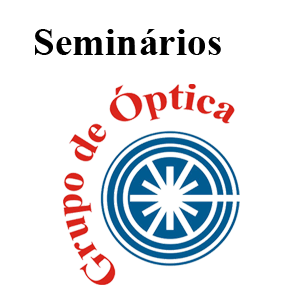 More than 80 years ago, Paul A. M. Dirac found a pioneering solution for the wavefunction of a charged particle in the magnetic field of a magnetic monopole [1]. This celebrated result also reveals that electronic charge must be quantized provided that even a single magnetic monopole exists. However, no magnetic monopoles have been convincingly found. Even the experimental observation of the quantum-mechanical structure acquired by the electron wavefunction found by Dirac has been lacking. In fact, there has been no prior confirmed experimental observations of monopoles in quantum order parameter.
More than 80 years ago, Paul A. M. Dirac found a pioneering solution for the wavefunction of a charged particle in the magnetic field of a magnetic monopole [1]. This celebrated result also reveals that electronic charge must be quantized provided that even a single magnetic monopole exists. However, no magnetic monopoles have been convincingly found. Even the experimental observation of the quantum-mechanical structure acquired by the electron wavefunction found by Dirac has been lacking. In fact, there has been no prior confirmed experimental observations of monopoles in quantum order parameter.
Based on the method proposed in Ref. [2], we present the experimental observation of Dirac monopoles formed in a synthetic magnetic field of an atomic Bose-Einstein condensate with spin degree of freedom [3]. The experiments are accurately simulated using a mean-field approach, and a very good quantitative agreement is obtained without fitting parameters.
After Dirac’s seminal work [1], ‘t Hooft and Polyakov found a finite-energy solution for the magnetic monopole particle in the grand unified field theories [4]. To this end, we report on the first experimental observation of a topological point defect in a quantum order parameter field [5]. These observations provide the first quantum-mechanical analogue for the magnetic monopole considered by ‘t Hooft and Polyakov. Strikingly, we observe that the polar order parameter supporting the topological point defect naturally undergoes a dynamical quantum phase transition into the ferromagnetic phase, giving rise to a Dirac monopole [6,7].
Whereas the two above-mentioned monopole experiments rely on an adiabatic ramp of the external magnetic field used to create the spin textures, we also used an instantaneous ramp and a variable waiting time to experimentally tie quantum knots [8]. To our knowledge these are the first quantum realizations of the elements of the third homotopy group.
[1] Dirac, P. A. M.. Proc. R. Soc. Lond. A 133, 60 (1931).
[2] V. Pietilä and Mikko Möttönen, Phys. Rev. Lett. 103, 030401 (2009).
[3] M. W. Ray, E. Ruokokoski, S. Kandel, M. Möttönen, and D. S. Hall, Nature 505, 657 (2014).
[4] G. ‘t Hooft, Nuclear Physics B 79 (1974) 276; A. M. Polyakov, JETP Lett. 20, 194 (1974).
[5] M. W. Ray, E. Ruokokoski, K. Tiurev, M. Möttönen, and D. S. Hall, Science 348, 544 (2015).
[6] K. Tiurev, E. Ruokokoski, H. Mäkelä, D. S. Hall, and M. Möttönen, Phys. Rev. A 93, 033638
(2016).
[7] T. Ollikainen, K. Tiurev, A. Blinova, W. Lee, D. S. Hall, and M. Möttönen, accepted to Phys. Rev. X, arXiv:1611.07766.
[8] D. S. Hall, M. W. Ray, K. Tiurev, E. Ruokokoski, A. H. Gheorghe, and M. Möttönen, Nature Phys.12, 478 (2016).
 Nanoparticles are omnipresent. They are everywhere around and even inside us. They are not simply very small pieces of matter, they are different and consequently of very big interest for fundamental research. Nanoparticles are also a major topic in the media since a few years and this general interest is due to the numerous potential applications in various fields comprising catalysis, materials science, medicine, electronics or informatics. But nanoparticles also raise anxieties. They are invisible and it is not easy to understand or predict their properties, especially concerning our health.
Nanoparticles are omnipresent. They are everywhere around and even inside us. They are not simply very small pieces of matter, they are different and consequently of very big interest for fundamental research. Nanoparticles are also a major topic in the media since a few years and this general interest is due to the numerous potential applications in various fields comprising catalysis, materials science, medicine, electronics or informatics. But nanoparticles also raise anxieties. They are invisible and it is not easy to understand or predict their properties, especially concerning our health.



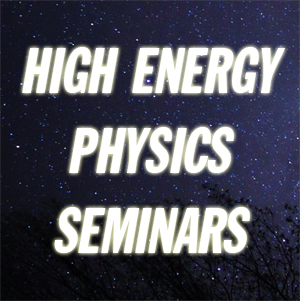 Vamos fazer uma breve introdução descrevendo o que chamamos de “charmonium exótico”, ou seja, mésons que não são compostos simplesmente por um par quark charme – antiquark charme. Faremos uma rápida revisão histórica, desde a descoberta do primeiro deles, o X(3872), em 2003, até os dias de hoje. Vamos falar das interpretações mais frequentes dadas a estes estados: tetraquark e molécula mesônica. Finalmente, vamos falar dos mecanismos de produção destes estados em colisões próton-próton e núcleo-núcleo no LHC. Este será um seminário pouco técnico e mais de divulgação.
Vamos fazer uma breve introdução descrevendo o que chamamos de “charmonium exótico”, ou seja, mésons que não são compostos simplesmente por um par quark charme – antiquark charme. Faremos uma rápida revisão histórica, desde a descoberta do primeiro deles, o X(3872), em 2003, até os dias de hoje. Vamos falar das interpretações mais frequentes dadas a estes estados: tetraquark e molécula mesônica. Finalmente, vamos falar dos mecanismos de produção destes estados em colisões próton-próton e núcleo-núcleo no LHC. Este será um seminário pouco técnico e mais de divulgação.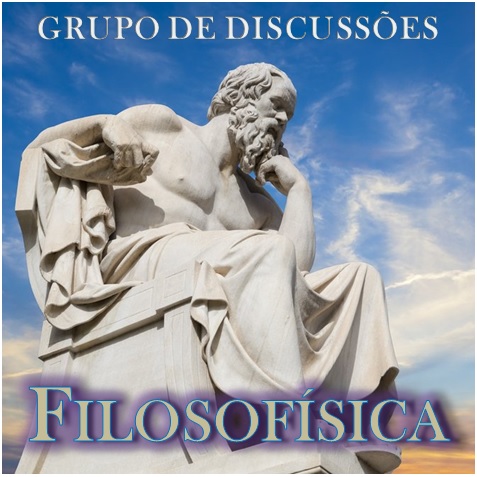 A Teoria do Aprendizado Estatístico fundamenta todos os aspectos teóricos necessários para provar, sob quais condições, um algoritmo de Aprendizado de Máquina Supervisionado aprende. Nesta palestra, serão abordados alguns dos conceitos básicos dessa teoria, bem como sobre o dilema Viés-Variância, que podem trazer a tona reflexões sobre como o humano, inclusive, aprende sobre qualquer assunto.
A Teoria do Aprendizado Estatístico fundamenta todos os aspectos teóricos necessários para provar, sob quais condições, um algoritmo de Aprendizado de Máquina Supervisionado aprende. Nesta palestra, serão abordados alguns dos conceitos básicos dessa teoria, bem como sobre o dilema Viés-Variância, que podem trazer a tona reflexões sobre como o humano, inclusive, aprende sobre qualquer assunto. More than 80 years ago, Paul A. M. Dirac found a pioneering solution for the wavefunction of a charged particle in the magnetic field of a magnetic monopole [1]. This celebrated result also reveals that electronic charge must be quantized provided that even a single magnetic monopole exists. However, no magnetic monopoles have been convincingly found. Even the experimental observation of the quantum-mechanical structure acquired by the electron wavefunction found by Dirac has been lacking. In fact, there has been no prior confirmed experimental observations of monopoles in quantum order parameter.
More than 80 years ago, Paul A. M. Dirac found a pioneering solution for the wavefunction of a charged particle in the magnetic field of a magnetic monopole [1]. This celebrated result also reveals that electronic charge must be quantized provided that even a single magnetic monopole exists. However, no magnetic monopoles have been convincingly found. Even the experimental observation of the quantum-mechanical structure acquired by the electron wavefunction found by Dirac has been lacking. In fact, there has been no prior confirmed experimental observations of monopoles in quantum order parameter.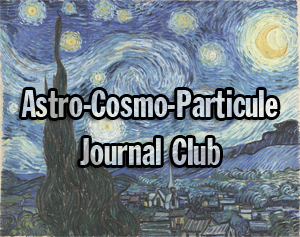 Para o Astro-Particle Day, foram convidados três palestrantes: professor
Para o Astro-Particle Day, foram convidados três palestrantes: professor 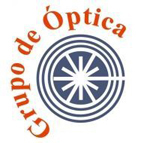 In this talk I will discuss the results of temporal intensity interferometry observations on three stars using a 1m optical telescope at OCA-Calern observatory. To our knowledge this is the first successful on sky experiments following the pioneering work of Hanbury Brown et al, in 1960’s and 1970’s.
In this talk I will discuss the results of temporal intensity interferometry observations on three stars using a 1m optical telescope at OCA-Calern observatory. To our knowledge this is the first successful on sky experiments following the pioneering work of Hanbury Brown et al, in 1960’s and 1970’s. Recentemente muito da atenção têm-se voltado para o estudo de semi-metais de Weyl e Dirac, principalmente após sua realização experimental em 2014. De maneira análoga ao grafeno, tais materiais são caracterizados por quasepartículas “não-massivas”, cuja dinâmica é governada pela equação de Weyl. Em presença de um campo magnético externo, tal equação prediz a existência de modos-zero (modos quirais), os quais são responsáveis pela famosa anomalia quiral. A assinatura dessa quebra de simetria pode ser observada no transporte eletrônico, onde a condutividade na direção longitudinal cresce com o campo magnético. Esses pontos de Dirac, escondidos dentro da superfície de Fermi, atuam como fontes ou sorvedouros do fluxo de Berry e a teoria cinética para as correspondentes quasepartículas necessita ser modificada. Essa modificação dá a origem ao referido termo quadrático na condutividade. Se o tempo permitir, gostaria de discutir sobre oscilações quânticas na magnetorresistência desses materiais além do papel exercido por estados de superfície nos mesmos.
Recentemente muito da atenção têm-se voltado para o estudo de semi-metais de Weyl e Dirac, principalmente após sua realização experimental em 2014. De maneira análoga ao grafeno, tais materiais são caracterizados por quasepartículas “não-massivas”, cuja dinâmica é governada pela equação de Weyl. Em presença de um campo magnético externo, tal equação prediz a existência de modos-zero (modos quirais), os quais são responsáveis pela famosa anomalia quiral. A assinatura dessa quebra de simetria pode ser observada no transporte eletrônico, onde a condutividade na direção longitudinal cresce com o campo magnético. Esses pontos de Dirac, escondidos dentro da superfície de Fermi, atuam como fontes ou sorvedouros do fluxo de Berry e a teoria cinética para as correspondentes quasepartículas necessita ser modificada. Essa modificação dá a origem ao referido termo quadrático na condutividade. Se o tempo permitir, gostaria de discutir sobre oscilações quânticas na magnetorresistência desses materiais além do papel exercido por estados de superfície nos mesmos. na Nova Zelândia, onde trabalha no desenvolvimento de magnetos com supercondutores de alto TC, ou seja, sem uso de hélio líquido, para espectroscopia e imagens. Nesta palestra, falará sobre a tecnologia envolvida e especificamente sobre o magneto de 3T para imagens que está sendo instalado em São Carlos.
na Nova Zelândia, onde trabalha no desenvolvimento de magnetos com supercondutores de alto TC, ou seja, sem uso de hélio líquido, para espectroscopia e imagens. Nesta palestra, falará sobre a tecnologia envolvida e especificamente sobre o magneto de 3T para imagens que está sendo instalado em São Carlos.